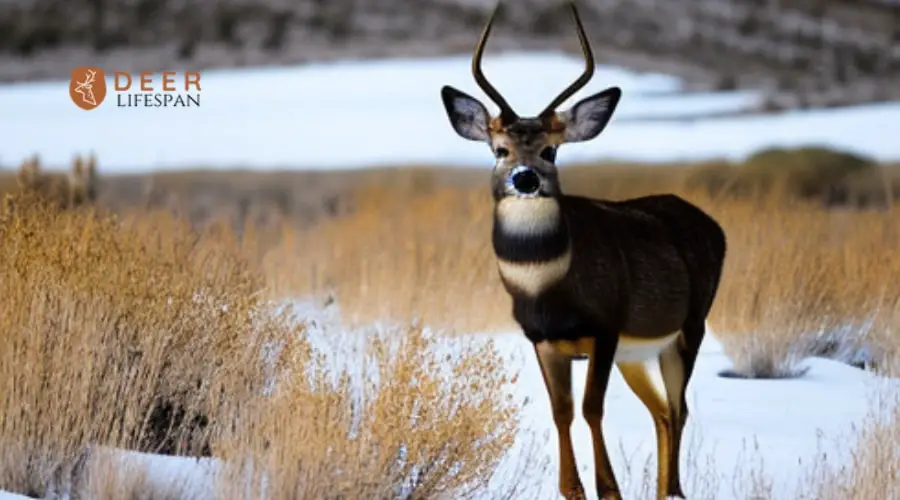The 180 class Mule deers are enormous and robust to detect them is challenging. One mistake or sound can alert them.
Mule deer can live approximately nine to eleven years in wildlife, but they can survive longer on farms. Bucks are unpredictable about their eating habits, sexual habits, traveling, etc. However, most of the 180-class mule deer still starve with a full stomach due to inappropriate nutritious food. And some countries don’t allow hunting in mating seasons as their populations grow.
Therefore, we mention 180 class mule deers tip-to-toe information in this article. Keep reading to know more.
Table of Contents
A Complete Guide on 180 Class Mule Deer!
Mule deers can grow their antler about twenty-five percent in a day, which are bones that grow in velvet skin each year. There are several exciting elements that you must know about 180 class mule deer.

180 Mule Deer Growth
Bucks can grow approximately four feet long, three to three and a half shoulders, and five to eight-inch long tails. Moreover, their weight is about one-thirty to two-eighty pounds. However, female deers are light in weight and shoulder size.
Migrate Habits
Mule deers don’t migrate during bits of snowing weather and can adapt to the cold and winter seasons. Yet, they migrate to lower elevations for a better approach to food. Most mountain residents have encountered bucks wandering around, spotted in droves near lakesides, primarily as school mascots.
180 Class in Mid-air
Bucks can’t fly, but you’ll be amazed when you see them stotting or maneuvering in the jungle. This looks magical when they spring into the air and lift their four feet in tandem. It is a fun game they like to play around their herd.
Also, they can change directions mid-air jump in a single leap, and when chased by a hungry predator, they can run approx speed forty-five miles per hour.
Starve With a Full Stomach.
180 mule deer are herbivores and need a plant-based diet but have sensitive stomachs to digest high cellulose content. Moreover, deers have a four-chambered stomach for digestion and fight bacteria to ferment.
These deers are starving with full stomachs due to much cellulose, which is hard to digest. So, deer need low cellulose, such as pine needles and bark.
Moreover, if you are a farmer, you must stock healthy foods in the summer, which will aid them in building fat stores for survival in the winter. If you are puzzled, then choose low-cellulose foods to protect your garden vegetables and flowers from them.
Mating Season of 180 Mule Deer
Mule deers are polyestrous and short-day breeders, and their mating season embarks from November to December. The 180 males grow antlers to attract female deer for mating. And they have to fight with other bucks for the right female for breeding. The 180 tags are superior compared to 140 to 170 mules deers. So, it gives them an advantage of winning and getting their partner sooner.
Alternatively, after a perfect match, they play chasing games for days before mating and stay together for seven months after mating. However, female deers usually give birth to a fawn in their first pregnancy but eventually give birth to twins.

Detect Mule Deer
Mule deers have big ears that can aid in identifying 180 mule deer quickly. They are generally three to a four-inch length long of the head. Also, tags have a black forehead contrasting light grey face.
Moreover, this color combo creates eye rings and muzzles more seemingly. They are generally brownish or grey, have small white and black tip tails, and have a white rump patch.
Smelling Sense of 180 Mule Deer
If you compare deer smell sense, then it is a thousand times better, according to biologists. Buck can smell elements or humans away up to half a mile, and that’s why they can combat danger. Tags can also smell water around two feet, and they can glimpse accordingly.
Better Vision
Mule deers have better vision as they have 360-degree views. So it makes it better as their eyes are located at the sides of their heads. Although they have better night vision than human vision, color and daytime vision are inappropriate.
And they can detect the slightest movement around sixty hundred meters. But they cannot see motionless shapes.
Bottom Line
Mule deers can be found in various states, but there are some specific states where you can easily find 180 class mule deers. For instance, Mexico, Idaho, Montana, Nebraska, and many more. However, you must refrain from mating season or check the rules and regulations of the cities before starting hunting.
Indeed, bucks are selective about their food, and to match their body require Forbes, browse, and leaves to survive. So it’s better to provide them with complete nutrients and avoid low-quality nutrients plants.
